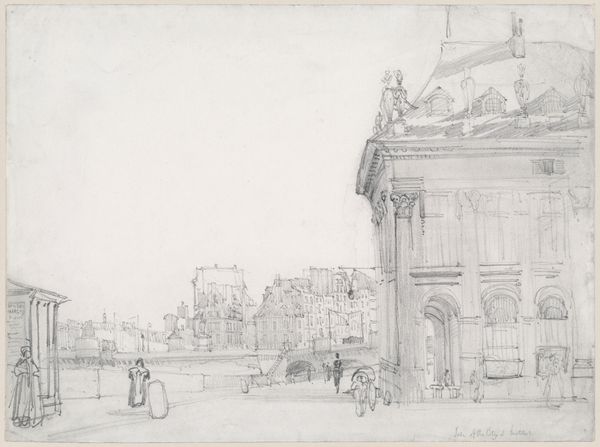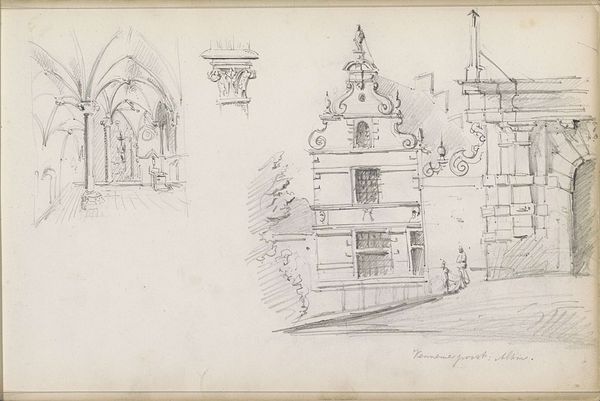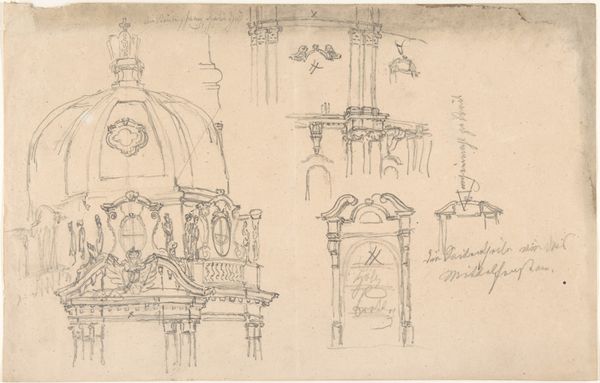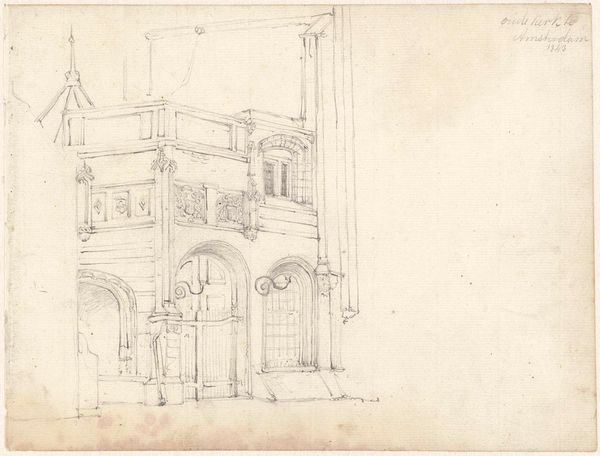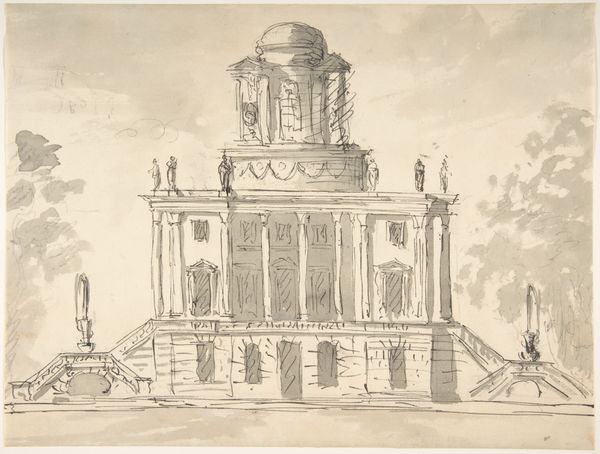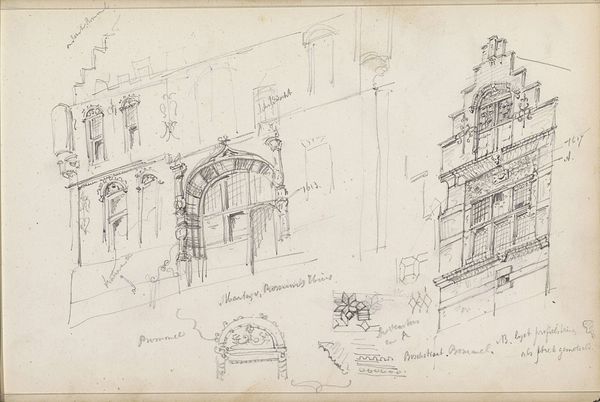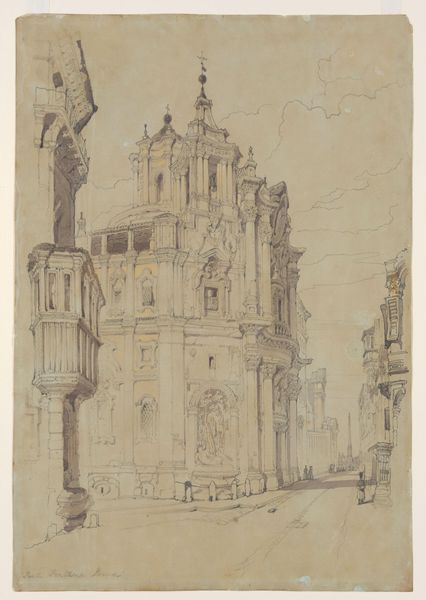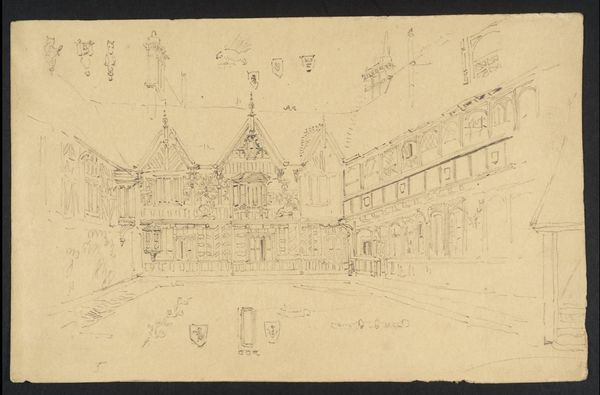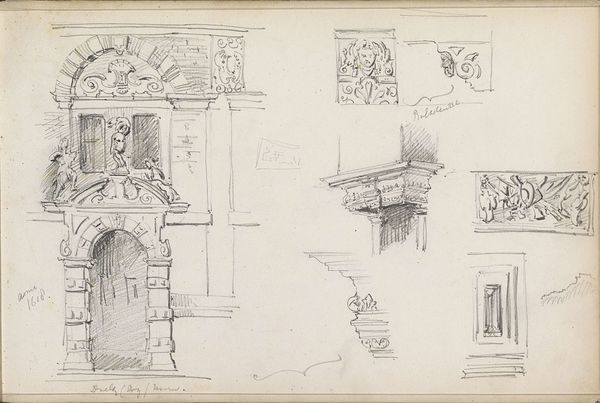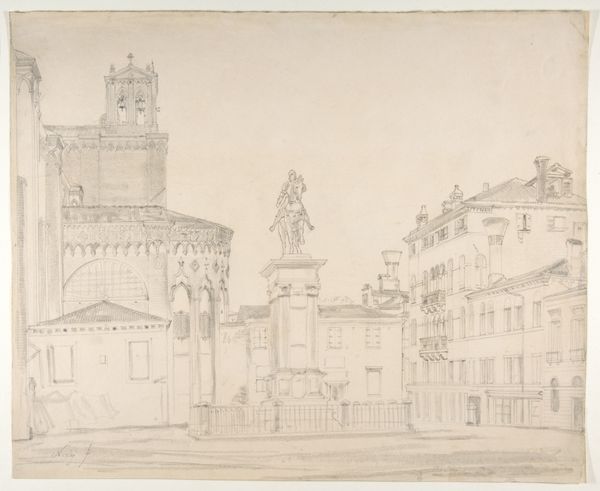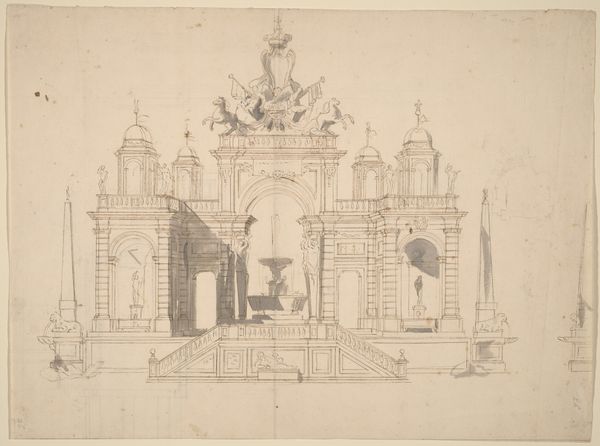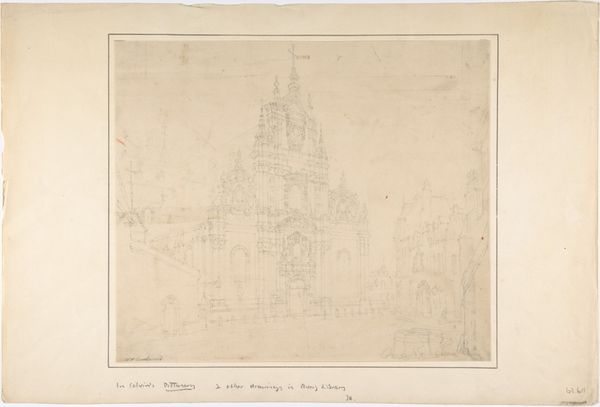
drawing, pencil, architecture
#
architectural sketch
#
drawing
#
quirky sketch
#
mechanical pen drawing
#
pen sketch
#
pencil sketch
#
sketch book
#
personal sketchbook
#
sketchwork
#
sketch
#
pen-ink sketch
#
pencil
#
pen work
#
cityscape
#
architecture
#
realism
Copyright: Rijks Museum: Open Domain
Curator: We are looking at a pencil and ink drawing from sometime between 1862 and 1867. The artist, Isaac Gosschalk, titled it "Waag te Alkmaar". Editor: There’s a certain weightlessness to it, isn't there? Even though it depicts architecture, something inherently solid. The delicacy of the line work gives it an ephemeral, dreamlike quality. Curator: Indeed. Notice the clear structural composition; the distinct planes, lines, and the architectural details presented almost as textual data. It invites a meticulous, almost analytical observation of form. The interplay of positive and negative space gives an elegant structure to the piece. Editor: And it makes me consider what a "weighing house," or "waag," signified in the socio-economic landscape of the time. A place of transaction, trust, and perhaps even exploitation. Whose goods were being weighed here? Who benefitted, and who was at a disadvantage within this system? These buildings weren’t neutral stages, they were enmeshed within very real power structures. Curator: The building on the right shows an architectural complexity that highlights the elaborate and precise decoration. The fenestration, the facade ornamentation, creates an intense and elaborate vertical hierarchy and progression. And in contrast the building on the left has only minimal detail and it suggests an opposing symmetry. Editor: Perhaps. Or it’s suggestive of what wasn’t being documented at the time; which parts of the city were purposefully omitted from sketches like this? Architectural drawings served to promote very specific narratives. This “Waag” embodies more than brick and mortar. It also represents the values that shaped that built environment. I also would note the figures perched high atop the building suggesting power and vigilance Curator: Fascinating how you've interwoven your considerations of economic disparity into its formal qualities. I still believe the interplay of the various elements results in the architectural details, showcasing the structure’s functional aesthetic as primary meaning. Editor: And I believe situating it within its social and historical reality brings additional layers of awareness and understanding. Curator: Regardless, the delicate craftsmanship leaves a lingering sense of wonder. Editor: Precisely, an invitation to look closer and question the values that erected these imposing structures to begin with.
Comments
No comments
Be the first to comment and join the conversation on the ultimate creative platform.
